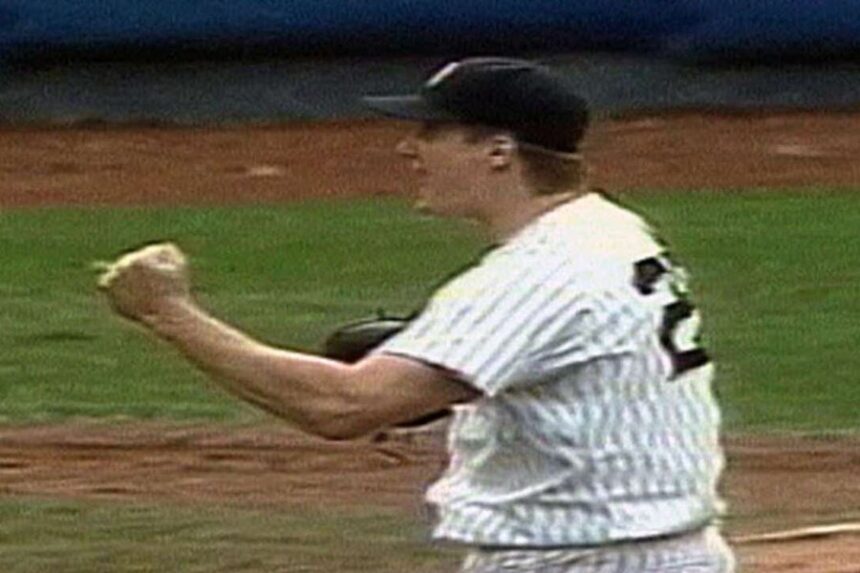Former MLB pitcher Jim Abbott, born without a right hand, is once again at the center of a national conversation—not for his fastball, but for the profound impact of his life story, now chronicled in a new documentary. The film, which features emotional tributes from top athletes with disabilities, serves as both a celebration of perseverance and a powerful reminder of how one person’s journey can ripple across generations.
Background and Emotional Core:
Jim Abbott’s legacy extends far beyond his no-hitter with the New York Yankees or his days as a standout at the University of Michigan. His story has long been a symbol of determination, resilience, and redefining limitations. But the new documentary brings his influence into sharper focus, highlighting how Abbott has quietly become a guiding light for other athletes who have overcome physical adversity.
Among those paying tribute in the film are:
- Shaquem Griffin, the first NFL player with one hand, thanks Abbott for blazing a trail.
- Nick Newell, a 39-year-old MMA fighter born without a left arm, credits Abbott with showing him what’s possible.
- Carson Pickett, U.S. Women’s National Soccer Team defender born without most of her left arm, expresses deep gratitude for Abbott’s example.
Their heartfelt messages converge on a central theme: representation matters, and Abbott’s career offered visibility and hope to those who often feel unseen. “They saw something in me that related to their own experiences,’’ Abbott said in the film. “With kids and families looking for hope.”
The Personal Side:
Though Abbott now resides in Southern California, his heart remains tied to Michigan, where he spends his summers rooting for the Detroit Tigers—his childhood team. “I just love when the Tigers are doing well,” he says. “The whole state just goes crazy… I’d love to see them keep it up. They’re incredible.”
He also follows baseball nationally and holds deep admiration for stars like Shohei Ohtani and Clayton Kershaw. Abbott reflected on Kershaw’s recent milestone of 3,000 career strikeouts with reverence: “It’s one of those immortal accomplishments. He’s been such a classy presence in Southern California for so long.”
Of Ohtani, Abbott adds: “I just marvel at what he’s doing. Having struggled to be a starting pitcher myself, and knowing how important routine and structure are, the fact that he does both [hit and pitch] is just unreal. It’s incomprehensible.”
A Moment of Reflection and Connection:
The film closes with a deeply personal moment. During a classroom visit, Abbott’s daughter once asked him, “Dad, do you like your little hand?”
It’s a question Abbott says he once would have answered differently. But today, with perspective and pride, he responds:
“I have to tell you, I do. I like my little hand. I haven’t always liked it. There were times I hated it. But that’s who I am, and it’s taken me to places I never would have gone without it.”
“It’s taught me that life’s not always easy, and it’s not always fair. But you can do things a little bit differently—and still do them just as well as anybody else. I hope we always believe that.”
Why This Matters:
The renewed attention on Abbott’s story underscores a broader societal shift toward inclusive representation in sports and media. At a time when more athletes are speaking openly about physical challenges and mental resilience, Abbott’s journey serves as a cornerstone for how strength is defined—not by what one lacks, but by how one adapts and leads.
For many, the documentary is not just a reflection on Abbott’s past—it’s a call to embrace diversity, push boundaries, and find purpose in adversity.
What’s Next:
The film is expected to air nationally, potentially becoming required viewing in athletic programs, classrooms, and disability awareness workshops. Meanwhile, Abbott continues to engage in motivational speaking, nonprofit work, and mentorship of young athletes facing similar challenges.
His influence, much like his iconic career, continues to stretch far beyond the baseball diamond.
What is the documentary about?
It’s a tribute to Jim Abbott’s life and legacy, showing how he inspired athletes born with limb differences.
Why is it significant?
It highlights Abbott’s far-reaching impact, not just in sports but as a symbol of hope and resilience.
How are others reacting?
Athletes like Shaquem Griffin, Nick Newell, and Carson Pickett credit Abbott for inspiring their journeys.
What message does Abbott share?
Those limitations do not define potential, and everyone can achieve greatness, even differently.




